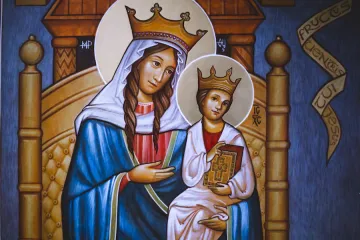Rome, Italy, Jul 30, 2023 / 06:00 am
On a small island called Tinos in the Aegean Sea along a remote slope of the Patellas mountain lies a holy site that attracts pilgrims from all over Greece. Our Lady of Vryssi, or “Virgin of the Fountain,” is venerated here. A 14th-century icon is preserved at this shrine, where a number of faithful testify to graces they’ve received. And every first Sunday in May, during a special celebration, drivers and their vehicles are blessed.
Located in the ecclesiastical province of Naxos-Tinos-Andros-Mykonos, the island of Tinos measures about 77 square miles and has only a few thousand inhabitants. But pilgrims come from far and wide to pray in the shrine’s chapel, which is tucked away at the end of a path amid olive, poplar, eucalyptus, and cypress trees.
The shrine, in the territory of the parish of Saint-Michel de Tarambados, is near the coastal town of Agia Marina. Its history is so ancient that the name “Vryssi” is not known with any certainty, though it is likely derived from the natural spring by the same name that flows on the island.
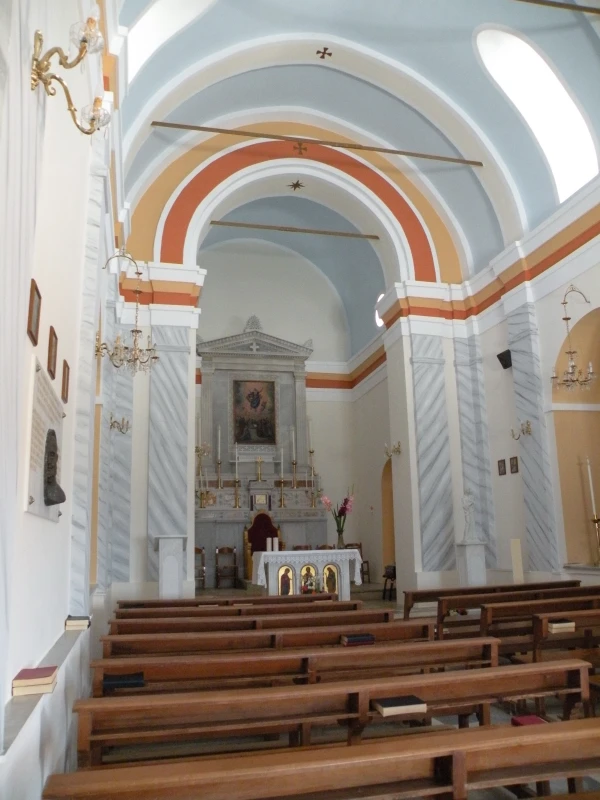
The origins of the shrine’s chapel can be traced back to the 17th century, between 1600 and 1619, in the small village of Tarambados where a nun of the Franciscan Third Order had three strange dreams, always identical: The Virgin Mary asked her to dig up an icon buried near some reeds — at least, that’s how the popular story goes, handed down through oral tradition. Diocesan archives have kept little record of it, and only research by Father Marcos Foskolos — now vicar general of the shrine — in the 1980s has attempted to shed light on the origins of this place of worship.
The story, which sits at the crossroads of history and legend, continues like this: The parish priest, at first reluctant, finally resolved to dig at the spot indicated by the nun as the spot her dream revealed to her and a buried icon was discovered. News of it spread like wildfire, immediately triggering devotion among the villagers, and the precious object was then brought to the local parish church to be properly reverenced. But to everyone’s amazement, the icon would disappear every night, only to return to the place it was found. Yielding to the will of the Mother of God, as told in the nun’s dreams, it was decided that a chapel would be built for her on the spot the icon was found.
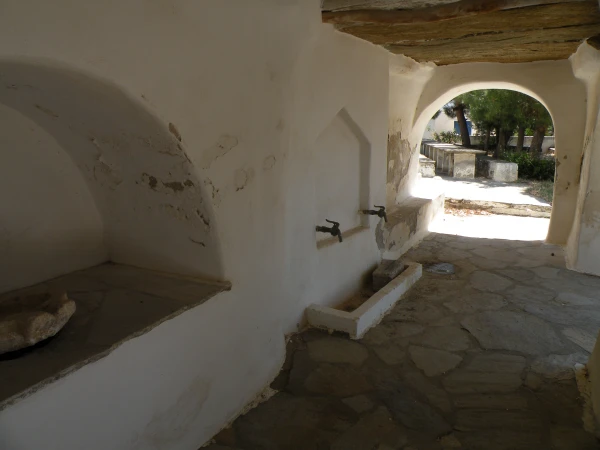
Whether elements of this story are true or not, the fact remains that today the Shrine of Vrissi is home to an icon of the Virgin Mary scientifically dated between the late 14th and early 15th centuries and to frescoes that are believed to be from the same period. There is evidence to support the fact that in the 1830s, the icon was transported to Constantinople to be covered in silver at the initiative of a woman from the town of Aetofolia on Tonis, wishing to express her gratitude for a miraculous cure.
The first chapel was built around 1642. Subsequently enlarged several times, it is dedicated to Popes John Paul II and Paul VI, as well as to John XXIII, who maintained a special bond with the shrine. Before he was elected pope, the then-Archbishop Angelo Giuseppe Roncalli, apostolic delegate to Greece, celebrated Mass at Vryssi on Aug. 15, 1937. The following year, on May 3, 1938, he sent to the shrine a silver chalice engraved with his name, accompanied by a letter in which he paid homage to the Virgin Mary as the one who “gives health, life, and blessing.”
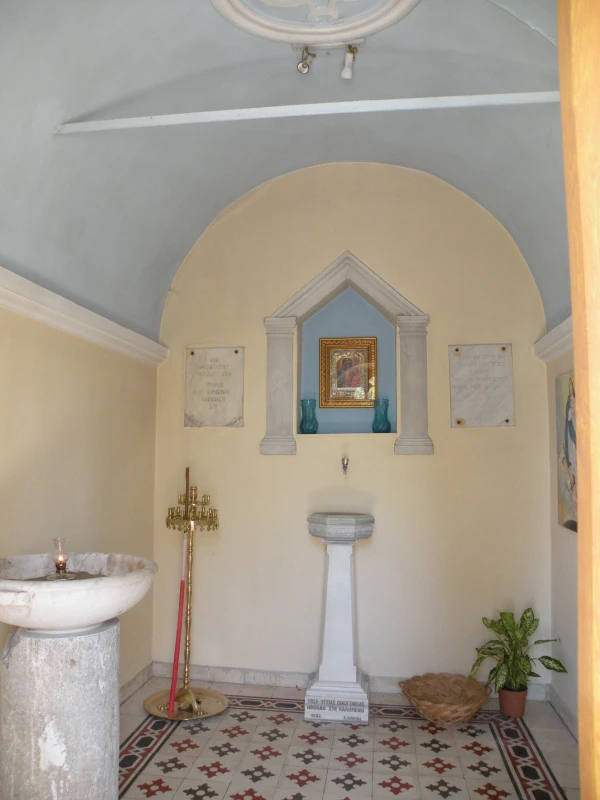
Many testimonies of grace
In addition to the chapel, Vryssi today offers an open-air shrine, inaugurated in 1994, and a few places where pilgrims are welcomed.
“Pilgrims come every day to visit the shrine, and during feast days we sometimes receive up to 3,000 people,“ Father Francesco Vidalis, chancellor of the diocese and rector of the shrine, told CNA. Most pilgrims come from Tinos but also from other parts of Greece and, during the summer months, from abroad.
At the back of the chapel, numerous ex-votos — religious offerings or testimonies given after favors received — are displayed for the faithful to see. The most recent testimony dates back “only a few weeks,“ Vidalis said. A woman wrote to the shrine, claiming to have been healed by the intercession of Our Lady of Vryssi. Abbé Alexandre Perros, another Catholic priest on the island, told CNA: “We have never tried to recognize a miracle here, even if there is a case for it.“
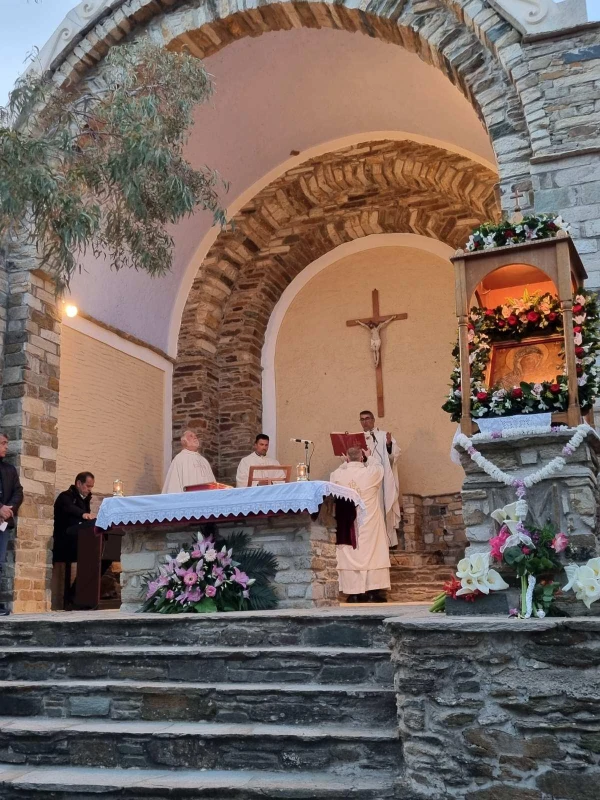
Vryssi’s major feasts
(Story continues below)
Vryssi is marked by two major events: the feast of the Assumption of the Blessed Virgin Mary on Aug. 15 and a celebration held on the first Sunday in May, which began on the eve of the First World War for soldiers preparing to leave for the front.
A significant event at the May celebration contributes to Vryssi’s renown: A special blessing for drivers has been conferred since 1967. The “driver’s prayer” is recited, imploring from heaven “a steady hand and a watchful eye.” The drivers ask for “prudence, joy, and calm” and protection from “speed mania” when behind the wheel. Drivers and vehicles of all kinds are then blessed.
The Vryssi shrine remains a place of strong devotion for the people of Tinos. “All the island’s priests take ... turns to celebrate Mass there every Thursday,” Vidalis explained.
In addition, a community of five nuns from the Congregation of the Servants of the Virgin of Matarà offers daily prayers and rosaries. And numerous volunteers help with the maintenance of the site.





